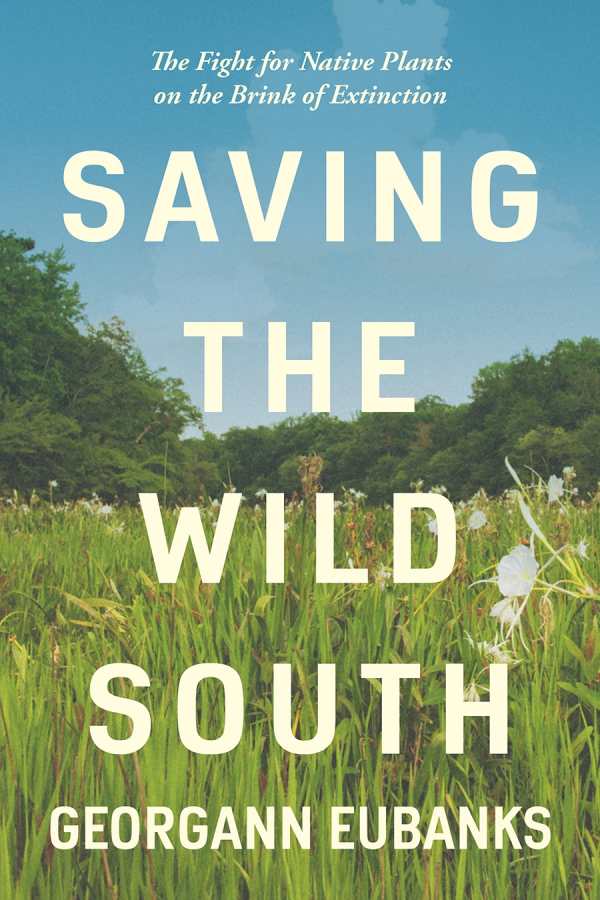Saving the Wild South
The Fight for Native Plants on the Brink of Extinction
Georgann Eubanks documents endangered native plants and a pantheon of botanists, citizen scientists, and environmental advocates working to restore their populations and habitats in Saving the Wild South. Each chapter profiles a specific species, from Alabama’s pitcher plants to Florida’s Torreya yew, and includes lively narratives of trips to botanical gardens, universities, and challenging field terrains across six Southern states.
Eubanks stresses the importance of these scarce plant populations in ecological, economic, and social terms. Though the South remains a hot spot of diversity, large-scale agriculture, resource extraction, and relentless residential and tourist development have fragmented and altered its landscape, and accelerated climate change and invasive species have undone millions of years of ecosystem evolution.
Eubanks also notes that some plants, like the Cahaba lily and river cane, are iconic natural landmarks and integral to “our identities as a diverse collection of peoples and cultures.” It is indeed encouraging to see this varied group of plant heroes presented with pride, with members of the Catawba and Cherokee nations working to save native plants for cultural and food sovereignty, and Black American activists working on river restoration—“so much work undoing what people have done.” Plants from disparate ecosystems are also on view, from wetlands to prairies, and the plentiful color photographs add depth to Eubanks’s botanical road trip.
Eubanks encapsulates the politics of endangered plants, from lack of funding for research and anti-poaching enforcement to people’s innate preference for animal species. Horticulture and botanical research are slow, patient, labor-intensive work, and landing a species onto an endangered list often inspires poachers to swoop in and decimate wild populations.
There’s great urgency when it comes to saving threatened plants, and Saving the Wild South is an inspiring, journalistic overview of endangered and important species, with broad appeal for gardeners and conservationists.
Reviewed by
Rachel Jagareski
Disclosure: This article is not an endorsement, but a review. The publisher of this book provided free copies of the book to have their book reviewed by a professional reviewer. No fee was paid by the publisher for this review. Foreword Reviews only recommends books that we love. Foreword Magazine, Inc. is disclosing this in accordance with the Federal Trade Commission’s 16 CFR, Part 255.

